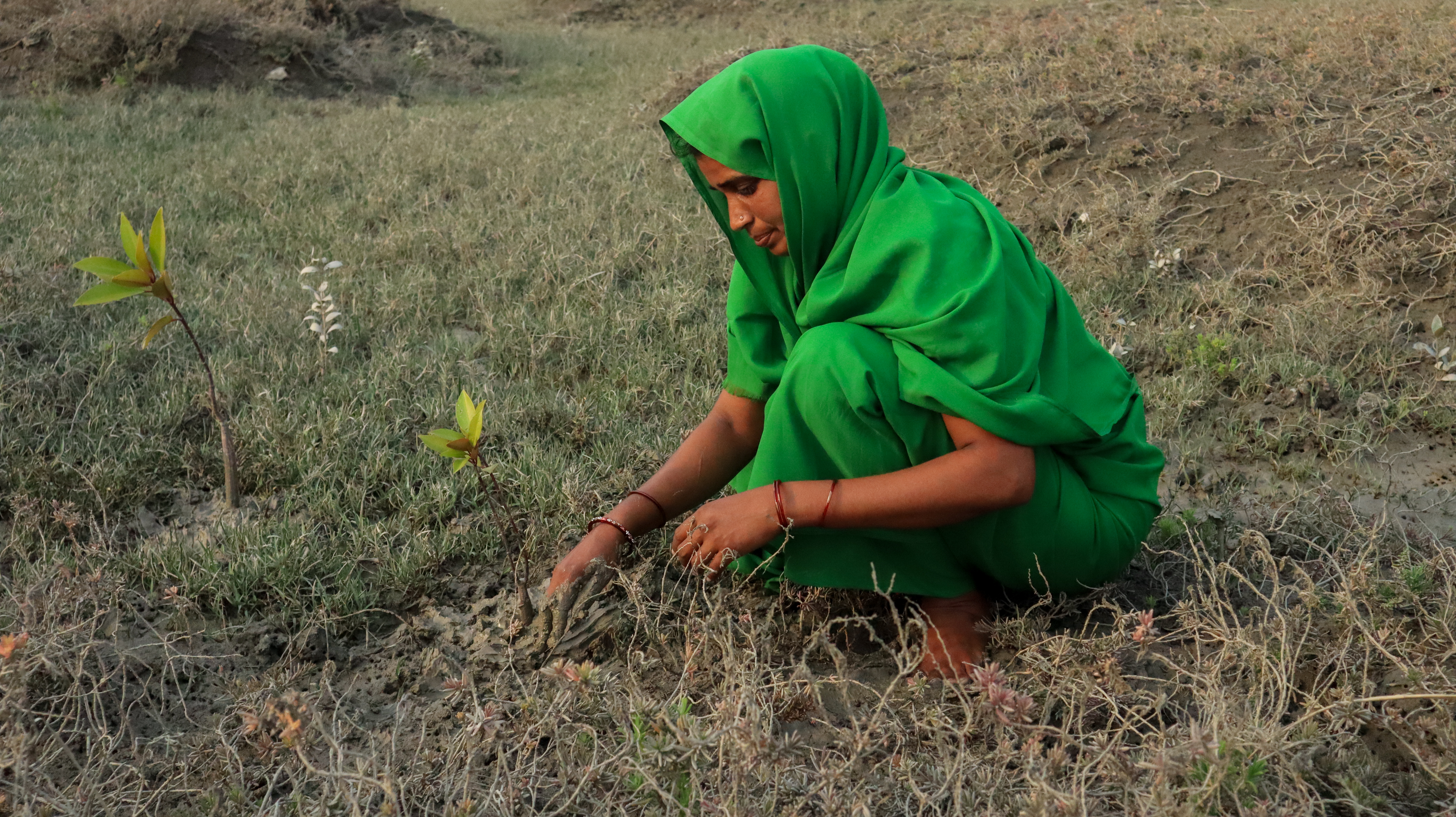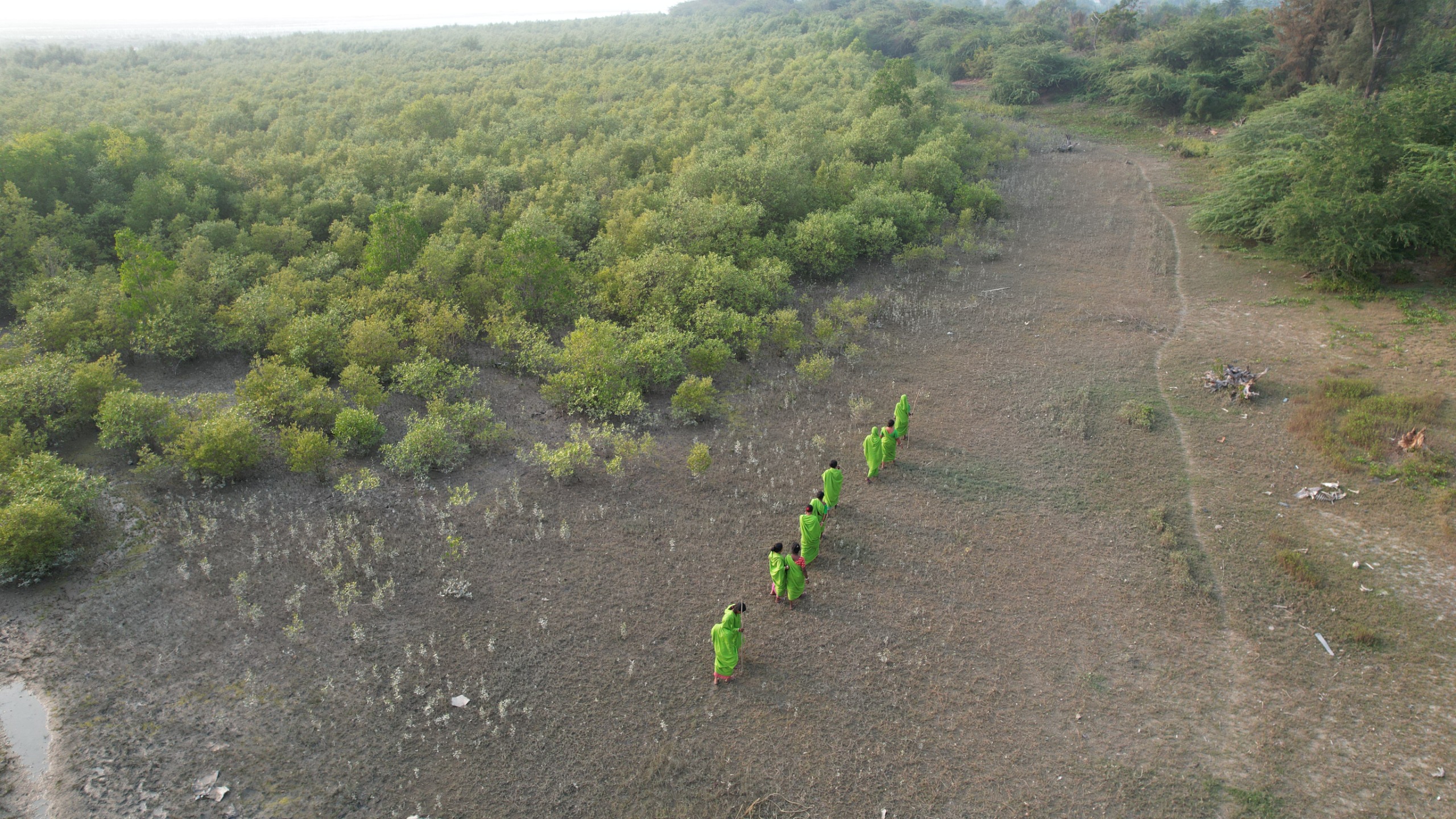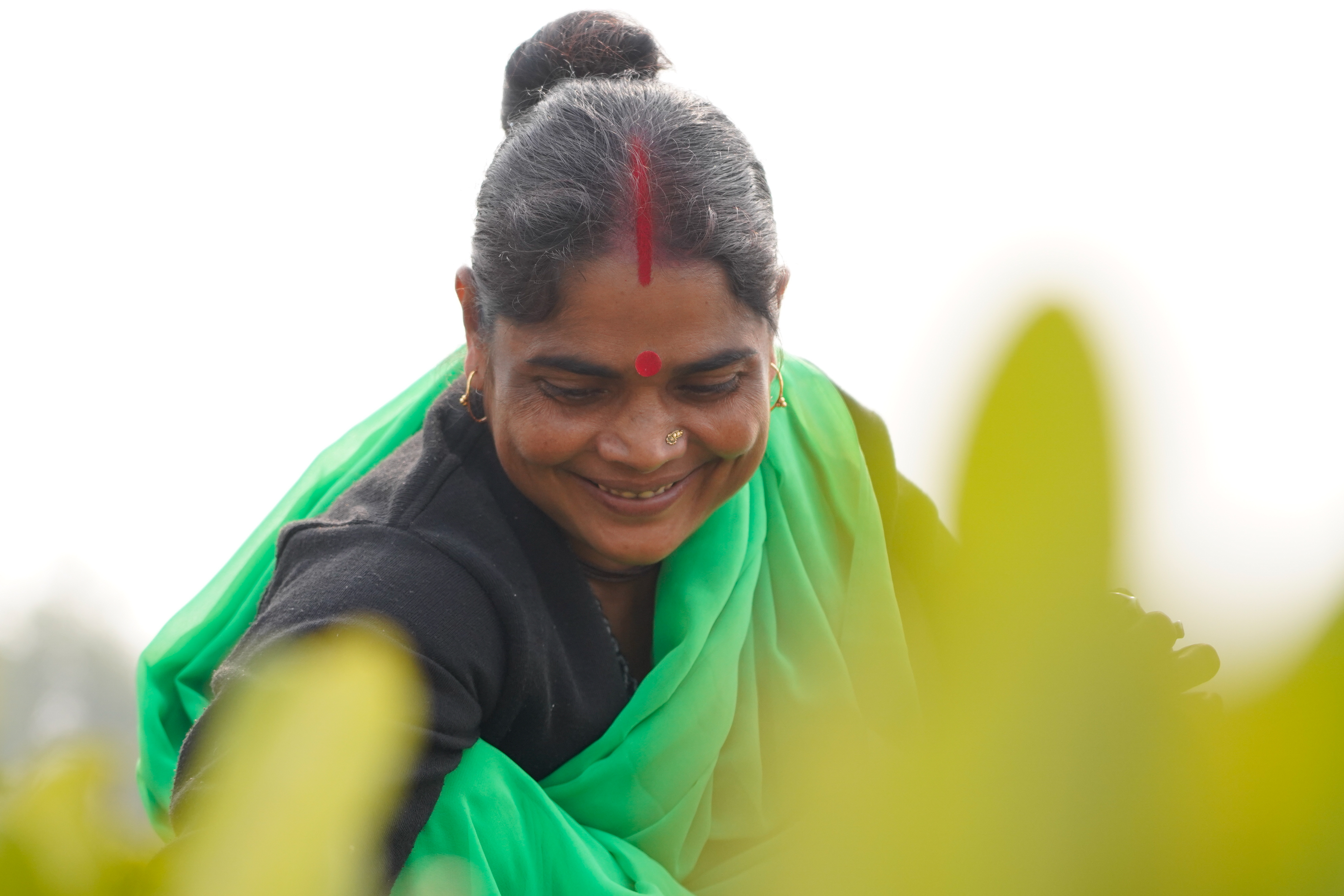In the Cyclone Capital of India, Women are Building a Living Wall Against Climate Change
Address structural inequalities
Build understanding
Collaborative action and investment
Devolve decision making
Invest in local capabilities
Organization: Nature Environment & Wildlife Society
2025 LOCAL ADAPTATION CHAMPIONS AWARD FINALIST
Local “Green Brigade” Restores Mangroves, Protects Lives, and Inspires Statewide Policy
Sundarbans, India — In the world’s largest mangrove forest, where rising seas and super cyclones increasingly threaten lives and livelihoods, women in green sarees are leading a quiet revolution.
More than 18,000 women across over 50 villages, organized into Badabon Farmer Interest Groups (BFIGs), have restored over 4,600 hectares of degraded coastline and riverbanks, harnessing the natural power of mangroves to stabilize embankments, absorb tidal energy, and protect farms from saltwater intrusion. They are supported by the Nature Environment and Wildlife Society (NEWS).
The Sundarbans, straddling India and Bangladesh along the Bay of Bengal, is home to over seven million people and often called the “cyclone capital of India.” Over the past two decades, the region has endured repeated disasters—from Aila in 2009 to Amphan in 2020 and Yaas in 2021—destroying homes, crops, and freshwater sources.

The Green Brigade: Women as Guardians of the Forest
The members of the Green Brigade are trained ecological leaders. Each BFIG member learns how to collect seeds, raise nurseries, plant saplings, and monitor and protect the mangroves. Many are widows, landless laborers, or from marginalized communities. Once seen primarily as victims of climate disasters, they are now recognized as decision-makers shaping the region’s climate resilience.
“We’ve begun to understand that mangroves need nurturing just like our children,” says Madhumita Bag from Buraburir Tat village. “If we plant, protect, and care for these mangroves together, we’ll have an umbrella shielding us all.”
What began as a small request for uniforms in the village of Kakdwip has now become an emblem of collective strength across the delta.

Local Knowledge, Local Solutions
The initiative draws on generations of local ecological knowledge. The women know precisely where mangroves will take root, which species thrive in which soils, and how to care for them through tidal cycles.
The results are visible. In villages where mangroves were restored, embankments remained intact during Cyclones Amphan and Yaas—while nearby areas without this green shield suffered devastating breaches. What started as tree planting has evolved into a living, community-built defense system protecting both people and biodiversity.
Community-Led Governance and Economic Empowerment
Each village has its own Mangrove Monitoring Committee, made up of BFIG members, local government representatives, and NEWS facilitators. These committees oversee participatory budgeting, ensuring that every rupee is spent according to community priorities and ecological needs.
The impact extends far beyond environmental restoration:
Ecological: Mangroves stabilize embankments, buffer storm surges, and restore biodiversity.
Social: Women gain leadership roles, recognition, and influence in village decision-making.
Economic: New income streams from nursery work, crab farming, and honey production reduce reliance on climate-sensitive farming.
Institutional: Local governance bodies now integrate women’s groups into disaster preparedness and ecological planning, linking efforts with national schemes like MGNREGA and the Jal Shakti Abhiyan for water conservation.

From Grassroots to Government Policy
The success of this locally led model has not gone unnoticed. After Cyclone Amphan, the Government of West Bengal adopted large-scale mangrove restoration—covering over 4,200 hectares across 217 sites—drawing directly on the approach pioneered by NEWS and the women of the Sundarbans.
“Their collective stewardship has transformed the social landscape,” says Ajanta Dey, Joint Secretary and Programme Director at NEWS. “Women who once stayed silent in village meetings are now protectors of mangroves, mentors to others, and leaders of community-led adaptation.”
Planting Hope for the Future
Looking ahead, NEWS aims to expand the Green Brigade to more than 25,000 women, scaling up this model of community-driven restoration and climate adaptation. But for the women of the Sundarbans, the work is personal. Protecting mangroves means protecting their homes, livelihoods, and dignity.
Rooted in the mud and tides of the Sundarbans, their movement demonstrates a powerful truth: resilience grows strongest when nurtured by those who call the land home.